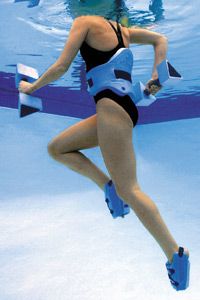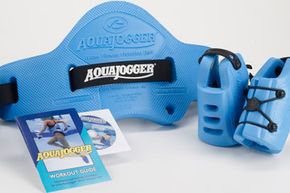If you're an athlete, your training routine most likely involves running. If you run, you've probably complained about the strain placed on your body by your feet hitting the pavement. But what can you do about it? This joint, bone and muscle strain is common, and when you're injured, the thought of abandoning your rigorous training schedule is daunting. It could mean losing muscle, speed and possibly even your competitive edge. Injured non-athletes also find recovery challenging, especially when normal movement like walking becomes difficult. If you need movement to heal, but movement causes undue stress on your body, what do you do? When you have a sports injury and need rehabilitation, or when you just want impact-free training, deep water running may be the answer.
Deep water running is just jogging in water deep enough that your feet don't touch the bottom. As simple as it sounds, though, it offers many benefits. Deep water running is not only a commonly recommended rehabilitation tool for sports injuries, but it's also a fitness and accelerated training method used by athletes and exercise fanatics everywhere.
Advertisement
The allure of deep water running is that as you train, the natural buoyancy of the water reduces the strain on your joints, bones and muscles by as much as 90 percent. As your body presses down in the water, the water presses up on your body, creating the illusion that you weigh less and reducing strain. Deep water running takes advantage of buoyancy while providing the same cardiovascular workout as if you were running on solid ground. In fact, deep water running made Runner's World magazine's list of the top 25 best training tips of all time. Another appealing factor is that you don't need any special training or equipment other than a swimming pool. (Note: Lap pools are generally too shallow for deep water running.) Some deep water running practitioners do use a buoyancy belt, but just as many don't.
Read on to learn about some techniques used in deep water running and how another underwater tool provides an even greater workout when incorporated into your routine.
Advertisement



